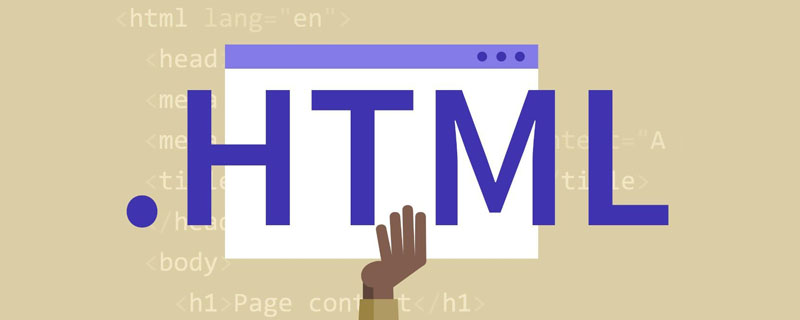This article is the first in a series of HTML5 articles.
HTML5 is the fifth revision of the language used by websites, and we will provide a report later detailing the new attack methods that will emerge against this new technology. Next, we will also take a closer look at the benefits, disadvantages, and ugly aspects of HTML5 for the online world and cybercriminals.
First, HTML5 (and related APIs) is not a software upgrade as we are familiar with it. This technology actually provides a lot of new features, each of which requires specialized support from the browser software. Here is a detailed Wikipedia article describing what features are currently implemented. To me, HTML5 brings a lot of great features, but there are five in particular that I think can really change how we interact with websites.
1. New graphics library: HTML5 introduces Canvas and WebGL function libraries, which can make website content richer. The WebGL function library, in particular, can almost change the entire game in this field. Just look at this famous Quake II game scene, which was completely developed in HTML5. To me, this represents a new era and allows one to imagine how games will be played in the future.
2. More convenient multimedia content: If you have ever designed a website that needs to contain a lot of audio and video content, you will know the clunky feeling. It is often necessary to use a bunch of Flash plus
3. Geolocation: People use the Internet less and less through desktops or even laptops. Today, many people browse the web through handheld mobile devices, such as smartphones and tablets. This current mobile network access feature, coupled with the new geolocation capabilities in HTML5, combine to open up countless new possibilities. Knowing a user's precise location when they visit your website allows you to deliver personalized content to match the user's context. For example, when visiting a website related to outings, if it is found that you are in a downtown area, it can provide information related to trip planning; but if you visit the website from a suburban location, the interactive map function will be displayed by default. 
4. Drag and drop function: This is a subtle change, but it is very important. The drag-and-drop feature allows you to drag content from the browser directly to your computer, or drag content from your computer to the browser. It’s really an epoch-making change, isn’t it? Let's take a look at this display and think about it, if social networking sites have such a function, when you come back from vacation, you can easily select your vacation photos, drag them to the browser, and share them with your online friends immediately. This is
This is the way I want to interact with my website!
5. Desktop notifications: Desktop notifications are small pop-up windows that appear outside the browser. Users can interact with the website even when they are not browsing the website. This feature is currently only available in Google Chrome, and you can see a demonstration here. These notifications are great for email notifications, social network updates, Weibo messages, and other services. Coupled with drag-and-drop functionality, the distinction between online and local applications is really blurred.
These are just a few of the amazing features of HTML5, there are many other demonstrations online worth checking out. But just like powerful powers in superhero movies, these abilities can be a double-edged sword. In the second article of this series, we will introduce the negative aspects of HTML5.
The above is the introduction of the five excellent functions of HTML5. For more related content, please pay attention to the PHP Chinese website (www.php.cn)!
 html5的div一行可以放两个吗Apr 25, 2022 pm 05:32 PM
html5的div一行可以放两个吗Apr 25, 2022 pm 05:32 PMhtml5的div元素默认一行不可以放两个。div是一个块级元素,一个元素会独占一行,两个div默认无法在同一行显示;但可以通过给div元素添加“display:inline;”样式,将其转为行内元素,就可以实现多个div在同一行显示了。
 html5中列表和表格的区别是什么Apr 28, 2022 pm 01:58 PM
html5中列表和表格的区别是什么Apr 28, 2022 pm 01:58 PMhtml5中列表和表格的区别:1、表格主要是用于显示数据的,而列表主要是用于给数据进行布局;2、表格是使用table标签配合tr、td、th等标签进行定义的,列表是利用li标签配合ol、ul等标签进行定义的。
 html5怎么让头和尾固定不动Apr 25, 2022 pm 02:30 PM
html5怎么让头和尾固定不动Apr 25, 2022 pm 02:30 PM固定方法:1、使用header标签定义文档头部内容,并添加“position:fixed;top:0;”样式让其固定不动;2、使用footer标签定义尾部内容,并添加“position: fixed;bottom: 0;”样式让其固定不动。
 HTML5中画布标签是什么May 18, 2022 pm 04:55 PM
HTML5中画布标签是什么May 18, 2022 pm 04:55 PMHTML5中画布标签是“<canvas>”。canvas标签用于图形的绘制,它只是一个矩形的图形容器,绘制图形必须通过脚本(通常是JavaScript)来完成;开发者可利用多种js方法来在canvas中绘制路径、盒、圆、字符以及添加图像等。
 html5中不支持的标签有哪些Mar 17, 2022 pm 05:43 PM
html5中不支持的标签有哪些Mar 17, 2022 pm 05:43 PMhtml5中不支持的标签有:1、acronym,用于定义首字母缩写,可用abbr替代;2、basefont,可利用css样式替代;3、applet,可用object替代;4、dir,定义目录列表,可用ul替代;5、big,定义大号文本等等。
 html5废弃了哪个列表标签Jun 01, 2022 pm 06:32 PM
html5废弃了哪个列表标签Jun 01, 2022 pm 06:32 PMhtml5废弃了dir列表标签。dir标签被用来定义目录列表,一般和li标签配合使用,在dir标签对中通过li标签来设置列表项,语法“<dir><li>列表项值</li>...</dir>”。HTML5已经不支持dir,可使用ul标签取代。
 html5是什么意思Apr 26, 2021 pm 03:02 PM
html5是什么意思Apr 26, 2021 pm 03:02 PMhtml5是指超文本标记语言(HTML)的第五次重大修改,即第5代HTML。HTML5是Web中核心语言HTML的规范,用户使用任何手段进行网页浏览时看到的内容原本都是HTML格式的,在浏览器中通过一些技术处理将其转换成为了可识别的信息。HTML5由不同的技术构成,其在互联网中得到了非常广泛的应用,提供更多增强网络应用的标准机。
 Html5怎么取消td边框May 18, 2022 pm 06:57 PM
Html5怎么取消td边框May 18, 2022 pm 06:57 PM3种取消方法:1、给td元素添加“border:none”无边框样式即可,语法“td{border:none}”。2、给td元素添加“border:0”样式,语法“td{border:0;}”,将td边框的宽度设置为0即可。3、给td元素添加“border:transparent”样式,语法“td{border:transparent;}”,将td边框的颜色设置为透明即可。


Hot AI Tools

Undresser.AI Undress
AI-powered app for creating realistic nude photos

AI Clothes Remover
Online AI tool for removing clothes from photos.

Undress AI Tool
Undress images for free

Clothoff.io
AI clothes remover

AI Hentai Generator
Generate AI Hentai for free.

Hot Article

Hot Tools

EditPlus Chinese cracked version
Small size, syntax highlighting, does not support code prompt function

Safe Exam Browser
Safe Exam Browser is a secure browser environment for taking online exams securely. This software turns any computer into a secure workstation. It controls access to any utility and prevents students from using unauthorized resources.

MantisBT
Mantis is an easy-to-deploy web-based defect tracking tool designed to aid in product defect tracking. It requires PHP, MySQL and a web server. Check out our demo and hosting services.

SublimeText3 English version
Recommended: Win version, supports code prompts!

SublimeText3 Mac version
God-level code editing software (SublimeText3)






